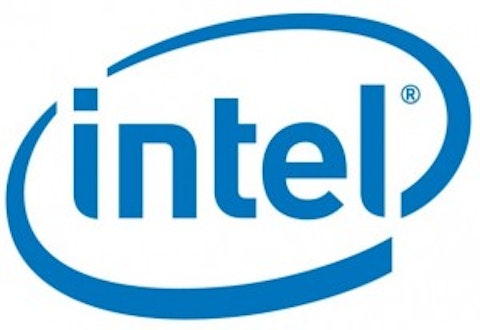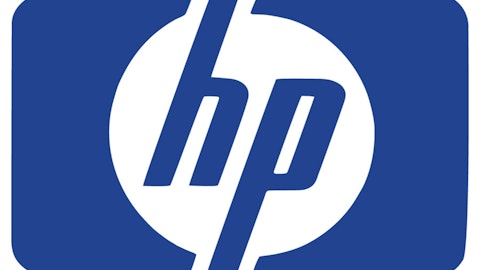Normally, when a business delivers results that fail to meet investors’ expectations, it is due to poor financial performance. Today, I believe I have found the exact opposite situation: a business that will miss expectations by continuing to survive and thrive but is currently priced to fail. Wall Street and the average investor seem to believe that Intel Corporation (NASDAQ:INTC) will be going out of business in about five years. I believe that Intel Corporation (NASDAQ:INTC) will miss that projection by a wide margin.

The reason I believe it is such a stretch to call AMD a real competitor to Intel Corporation (NASDAQ:INTC) is that its business can most kindly be described as a basket case.
It is projected to lose $221.34 million in the current fiscal year, ending Dec. 31, and an additional $35.7 million next year! It has a current debt to equity ratio of 3.8 to 1, and given the projections for this year, that will get worse. With current shareholder equity of only $538 million, these projections would equate to a loss of 41% of total equity in 2013 alone! It would border on insanity to consider this business a real competitor to a cash-gushing giant like Intel Corporation (NASDAQ:INTC).
Is Intel really priced to fail?
It is hard to believe that anyone believes Intel is going out of business, but, a dispassionate analysis of the numbers seems to indicate that is the current sentiment on Wall Street.
Last year, Intel generated cash from operations of almost $18.9 billion, against a current market cap (less cash on hand) of $95 billion. This means that minus its existing cash hoard, this business is priced at 5.03 times its cash-generating capability. Even when considering the substantial capital expenditures Intel makes in order to maintain its dominant position, it maintains a multiple of 10.5 times free cash flow when a five-year average of capital expenditures is applied. This is simply an absurdly cheap valuation for a business that has no real competition in its primary business and generates almost $19 billion/year in cash flow.
Valuation: Intel Versus the Competition
INTC TXN AMD
P/E Current 9.83 22.7 -1.61
P/E Forward 9.97 15.66 -51.2
Proj. 5-Yr. Earnings Grwth. 9.7% 8.3% 10.2%
Debt to Equity 0 0.52 3.8
Gross Margin 5-Year 60.7% 50.2% 39.5%
Net Margin 5-Year 20.2% 16.7% -8.0%
ROA 5-yr. average 14.6% 14.3% -6.9%
ROE 5-yr. average 20.2% 20.6% -45.8%
ROC 5-yr. average 17.3% 16.9% -10.2%
As these numbers reveal, Intel is performing financially much like Texas Instruments, but is priced much closer to the valuations assigned to Advanced Mirco Devices. If Intel were to simply be assigned a market value based on a P/E ratio equal to Texas Instruments, shareholders would be rewarded by with a 50% return on investment.
Is there any rational explanation for this discrepancy? Well, Wall Street dislikes Intel at the moment because it’s been late to the party in the chip market for mobile devices, currently dominated by QUALCOMM, Inc. (NASDAQ:QCOM) .
Intel has made it clear that it intends to establish a presence in the chip market for mobile devices, and it certainly has the wherewithal to do so. I am quite sure that this is not news that pleases Qualcomm, but since it’s slightly larger than Intel in market capitalization, I doubt it’s shaking in itsboots.
The same probably cannot be said for two of the smaller players in this segment: NVIDIA Corporation (NASDAQ:NVDA) , with a market cap of $7.87 billion, and Marvell Technology Group Ltd. (NASDAQ:MRVL) , with a market cap of $5.5 billion. However, shareholders of one of these smaller players could get an early Christmas, should Intel decide to simply purchase some existing expertise and market share in the mobile device segment of the chip market.
Today, we can profit today from Intel’s future colossal failure to go out of business, as it seems to be currently priced to do. While you wait for the market to recognize its mistake and reward you with a substantial capital gain, you will also be able to enjoy the generous $0.90-per-share dividend, which provides a 4.3% yield.
The article Profit From Intel’s Colossal Failure originally appeared on Fool.com and is written by Ken McGaha.
Copyright © 1995 – 2013 The Motley Fool, LLC. All rights reserved. The Motley Fool has a disclosure policy.




